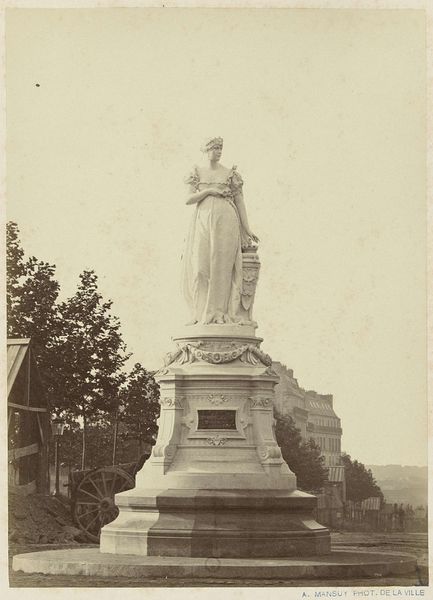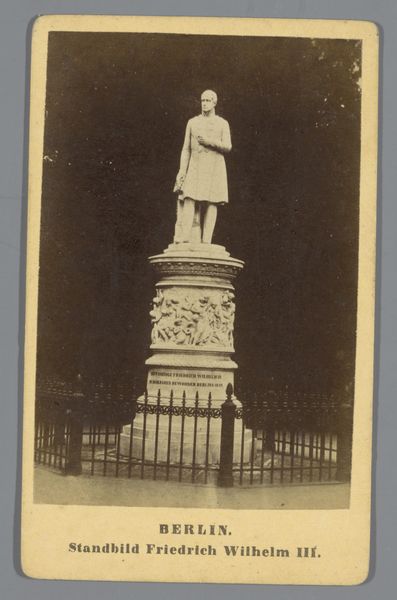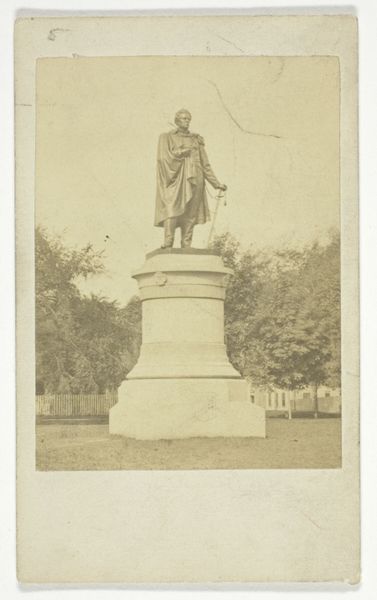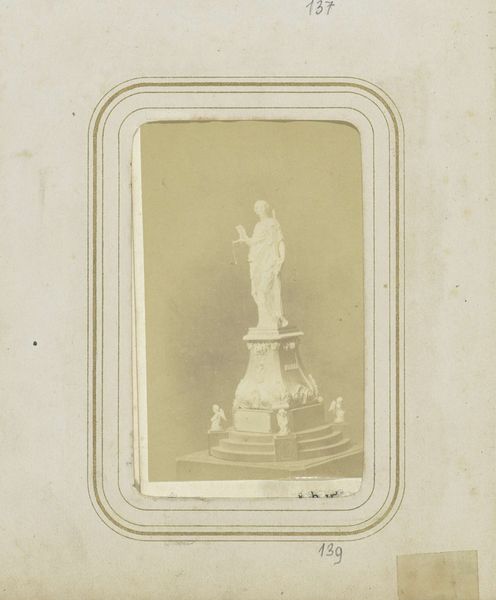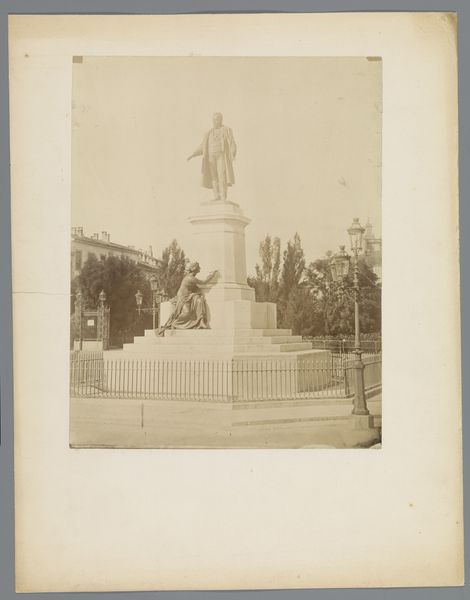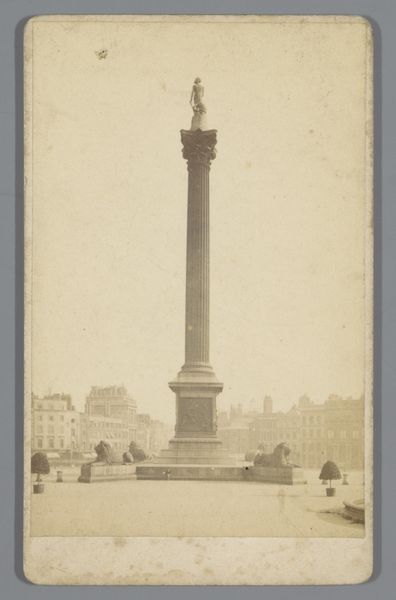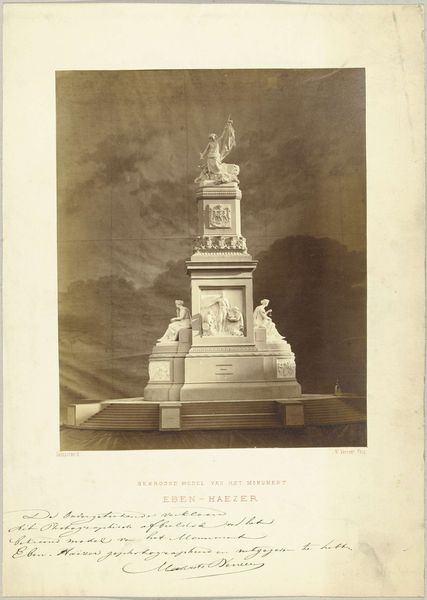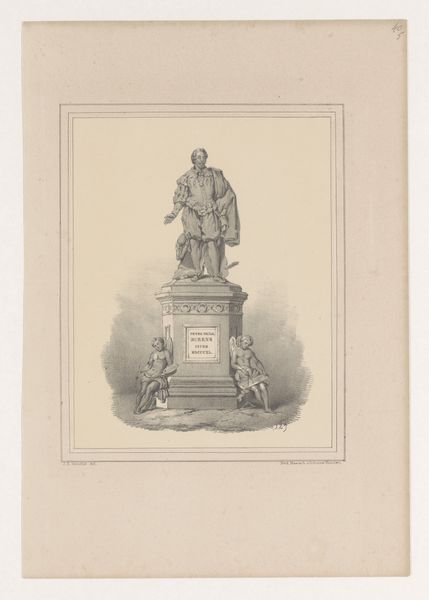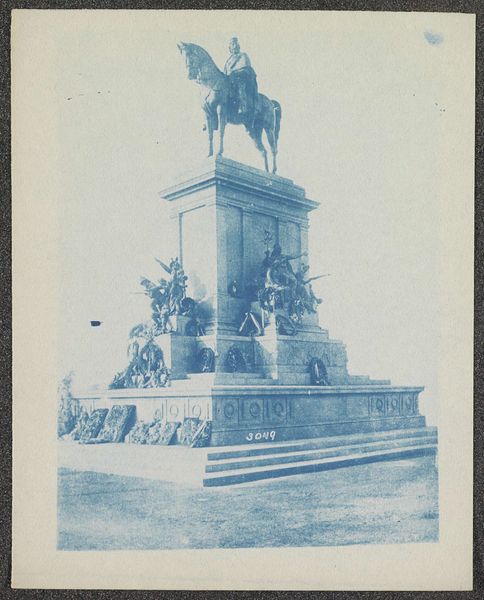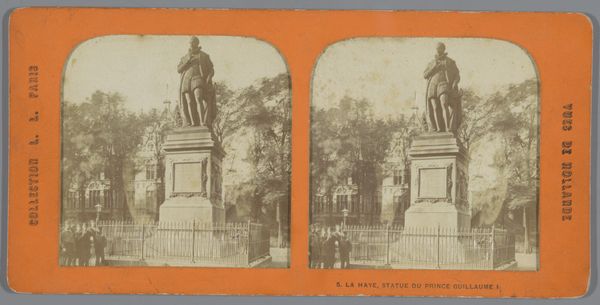
Model van het monument voor Pieter Adriaansz. van der Werff te Leiden 1874 - 1900
0:00
0:00
print, photography, sculpture, gelatin-silver-print
#
portrait
# print
#
landscape
#
photography
#
sculpture
#
gelatin-silver-print
#
19th century
#
realism
#
statue
Dimensions: height 167 mm, width 107 mm
Copyright: Rijks Museum: Open Domain
Editor: This photograph, dating from 1874 to 1900, depicts Hendrik Jonker’s "Model van het monument voor Pieter Adriaansz. van der Werff te Leiden" – a monument for Pieter Adriaansz van der Werff in Leiden. It’s a gelatin-silver print, and what strikes me is the strange combination of photographic realism of the statue itself with the painted-in background landscape. How do you interpret the decision to portray the sculpture in this manufactured way? Curator: That contrast is precisely where I find the intrigue. We have a photographic representation of a sculpted monument – already layers of mediation – placed against a fabricated landscape. This layering speaks volumes about 19th-century attitudes towards craftsmanship, industry, and authenticity. Consider the labor involved: sculptors shaping stone, photographers manipulating light and chemicals, painters creating idyllic backdrops. It challenges the distinction between ‘high’ art, the sculpture itself, and the supposedly 'lesser' crafts of photography and set painting, doesn’t it? Editor: So, you’re saying the photograph highlights the production process and social hierarchies inherent in artmaking at the time? Curator: Exactly. And note that this isn't just a straightforward documentation of a monument. It's a sales photograph, a reproducible object intended for a mass audience, advertising a unique artwork. The choice of materials for both the sculpture, likely stone, and the photograph, gelatin silver, also tells a story about durability versus reproducibility, permanence versus mass consumption. Editor: It's interesting to consider how the photograph, as a commodity, circulates the monument's image and its associated cultural value, far beyond the physical site. The monument then becomes this idea replicated again and again via this mass-produced photo. Curator: Precisely. What seems at first glance a straightforward representation reveals complex relationships between artistic labor, material value, and modes of reproduction in the 19th century. The print itself, in contrast to the monument, is more transient. What does that transience communicate? Editor: It suggests that cultural memory and historical narratives are continuously being reshaped and circulated through changing technologies and commercial incentives. Thanks for making me see it this way! Curator: My pleasure. It's always fascinating to examine how art objects are constructed, distributed, and consumed.
Comments
No comments
Be the first to comment and join the conversation on the ultimate creative platform.

